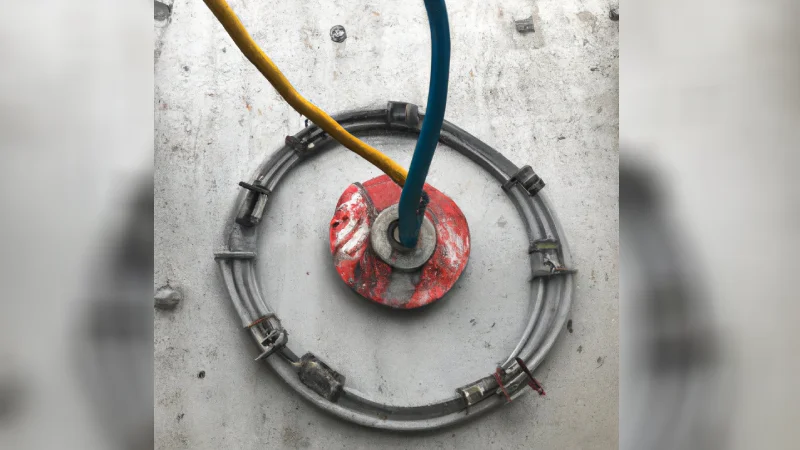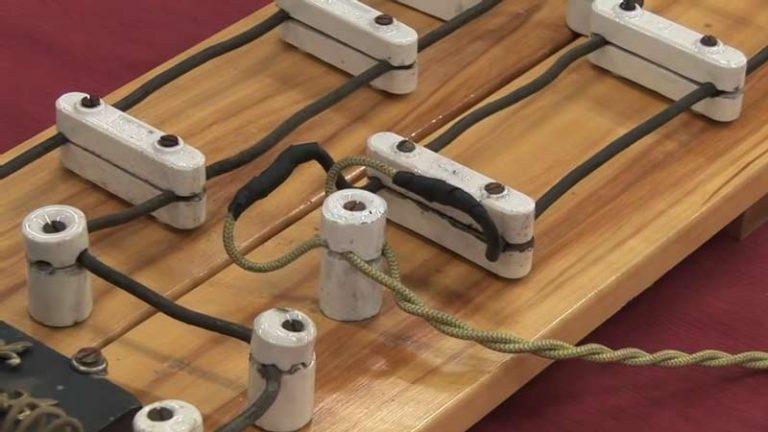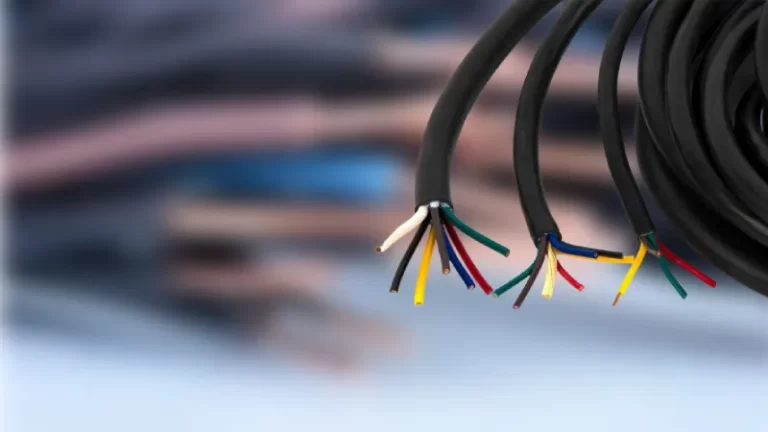Ring and String Electrical Systems

Ring and string electrical is a type of low voltage wiring system used in commercial buildings. It involves the installation of rings, typically covered with blank plates, in the walls, and a conduit with a string running from the ring up to the ceiling.
This system allows for the installation of low voltage cables, such as Ethernet or phone cables, at any time in the future without having to cut into the walls or disrupt finished surfaces. One of the main benefits of a ring and string electrical system is its flexibility, as it allows for the easy addition or removal of cables as needed.
It is important to note that a ring and string system is typically only suitable for use in commercial buildings with a lay-in ceiling, and requires the services of a licensed electrician or other qualified professional for installation and maintenance.
You'll Learn About
Ring and String Conduit
In a building with a ring and string electrical system, there are low voltage rings installed in the walls, typically covered with blank plates. These rings can be used to run low voltage cables, such as Ethernet or phone cables, at any time in the future by removing the blank plate and pulling the cables through the ring and up to the ceiling through a conduit. This allows for the installation of cables without having to cut into the walls or disrupt finished surfaces.
In most states, including Maryland, low voltage wiring must be installed by a licensed electrician or someone certified by the state in low voltage wiring. This includes pulling cables through a ring and string system. While a volunteer who is retired and has experience in this line of work may be able to assist with the installation, it is generally recommended to hire a licensed electrician to ensure that the work is done safely and to code.
It is worth noting that while a ring and string system can be a convenient way to run low voltage cables, it is not suitable for all types of buildings or situations. It is typically used in commercial buildings with a lay-in ceiling, and may not be appropriate in other types of structures. It is always best to consult with a licensed electrician or other qualified professional to determine the most appropriate electrical system for your needs.
How Ring and String Electrical Systems Work
A ring and string electrical system consists of several components, including low voltage rings, blank plates, conduits, and strings. The low voltage rings are installed in the walls of a commercial building and are typically covered with blank plates when not in use.
The blank plates can be removed to access the rings and run cables through them. The rings are connected to a conduit, which is a pipe or tube used to protect and route cables. The conduit runs from the ring up to the ceiling, where it is typically bent at a 90 degree angle and tied off to a building support member.
A string is attached to the conduit and also connected to the ring, and is used to pull the cables through the system.
To run cables through a ring and string system, the blank plate is removed from the wall and the cables are fed through the ring and into the conduit. The cables are then pulled up through the conduit and into the ceiling using the string. Once the cables are in place, the blank plate is replaced and the system is ready for use.
Ring and string systems can be used to run a variety of low voltage cables, including Ethernet, phone, and audio/visual cables. These systems are commonly used in commercial buildings to provide connectivity for communication and networking purposes.
Advantages of Using a Ring and String System
There are several advantages to using a ring and string electrical system:
Ability to Install Cables Without Cutting Into Walls or Disrupting Finished Surfaces
One of the main benefits of a ring and string system is that it allows for the installation of low voltage cables without having to cut into walls or disrupt finished surfaces. This is especially useful in situations where the walls or other surfaces have already been completed, as it avoids the need for costly repairs or renovations.
Flexibility to Add or Remove Cables in the Future
Another advantage of a ring and string system is its flexibility. Because the cables are run through the system without having to cut into the walls, it is easy to add or remove cables as needed without causing any damage. This makes it a convenient option for situations where the need for connectivity may change in the future.
Ease of Maintenance and Repair
A ring and string system is also easy to maintain and repair. If a cable needs to be replaced or repaired, it can simply be pulled out of the system and replaced without having to cut into the walls or disrupt finished surfaces. This makes it a cost-effective and convenient option for maintaining connectivity.
Disadvantages of Using a Ring and String System
There are a few disadvantages to using a ring and string electrical system:
Limited to Commercial Buildings With a Lay-in Ceiling
One disadvantage of a ring and string system is that it is typically only suitable for use in commercial buildings with a lay-in ceiling. This means that it may not be an option for residential or other types of buildings.
May Not Be Suitable for All Types of Cables or Situations
Another potential disadvantage is that a ring and string system may not be suitable for all types of cables or situations. For example, it may not be suitable for cables that require a larger diameter or for situations where the cables need to be run through walls or other surfaces that cannot accommodate a conduit.
Requires the Services of a Licensed Electrician or Other Qualified Professional for Installation and Maintenance
A ring and string system requires the services of a licensed electrician or other qualified professional for installation and maintenance. This can add to the cost of the system and may not be practical or cost-effective in some situations.
How Many Amps Can a Ring Main Take?
A ring main, also known as a ring circuit, is an electrical wiring system commonly used in residential and commercial buildings. It provides a continuous circuit for electrical power distribution and is rated for a specific maximum current.
The Rating of a Ring Main
A ring main is typically rated at 30 amps, which equates to a maximum power output of 7200 watts. This means that the total current flowing through the ring main must not exceed 30 amps at any one time.
The Floor Area Served by a Ring Main
A ring main is designed to serve a specific floor area, typically up to 100 square meters. This means that the total power demand from electrical devices and appliances connected to the ring main should not exceed the maximum power output of 7200 watts.
The Number of Sockets and Fused Connection Unit
In theory, a ring main can have any number of socket outlets or fused connection units connected to it. However, the total number of devices connected to the ring main should not exceed the maximum current rating of 30 amps, as this could cause the circuit to overload and potentially result in a fire or electrical shock.
Crucial Aspect of Its Design
The current rating of a ring main is a crucial aspect of its design and must be taken into consideration when determining the number of electrical devices that can be connected to it. Exceeding the maximum current rating can result in serious safety hazards and must be avoided. It is important to follow electrical safety regulations and guidelines to ensure that ring mains are installed and used safely and correctly.
Conclusion
A ring and string electrical system is a type of low voltage wiring system used in commercial buildings to run Ethernet, phone, and other types of cables. It consists of low voltage rings installed in the walls, covered with blank plates, and a conduit with a string running from the ring up to the ceiling.
One of the main benefits of a ring and string system is its ability to install cables without cutting into walls or disrupting finished surfaces, as well as its flexibility to add or remove cables in the future.
However, it is important to note that a ring and string system is typically only suitable for use in commercial buildings with a lay-in ceiling, and may not be suitable for all types of cables or situations.
It also requires the services of a licensed electrician or another qualified professional for installation and maintenance. If you are considering using a ring and string system, it is recommended to consult with a licensed electrician or another qualified professional to determine if it is appropriate for your needs. You’ll also need to wire carefully.



